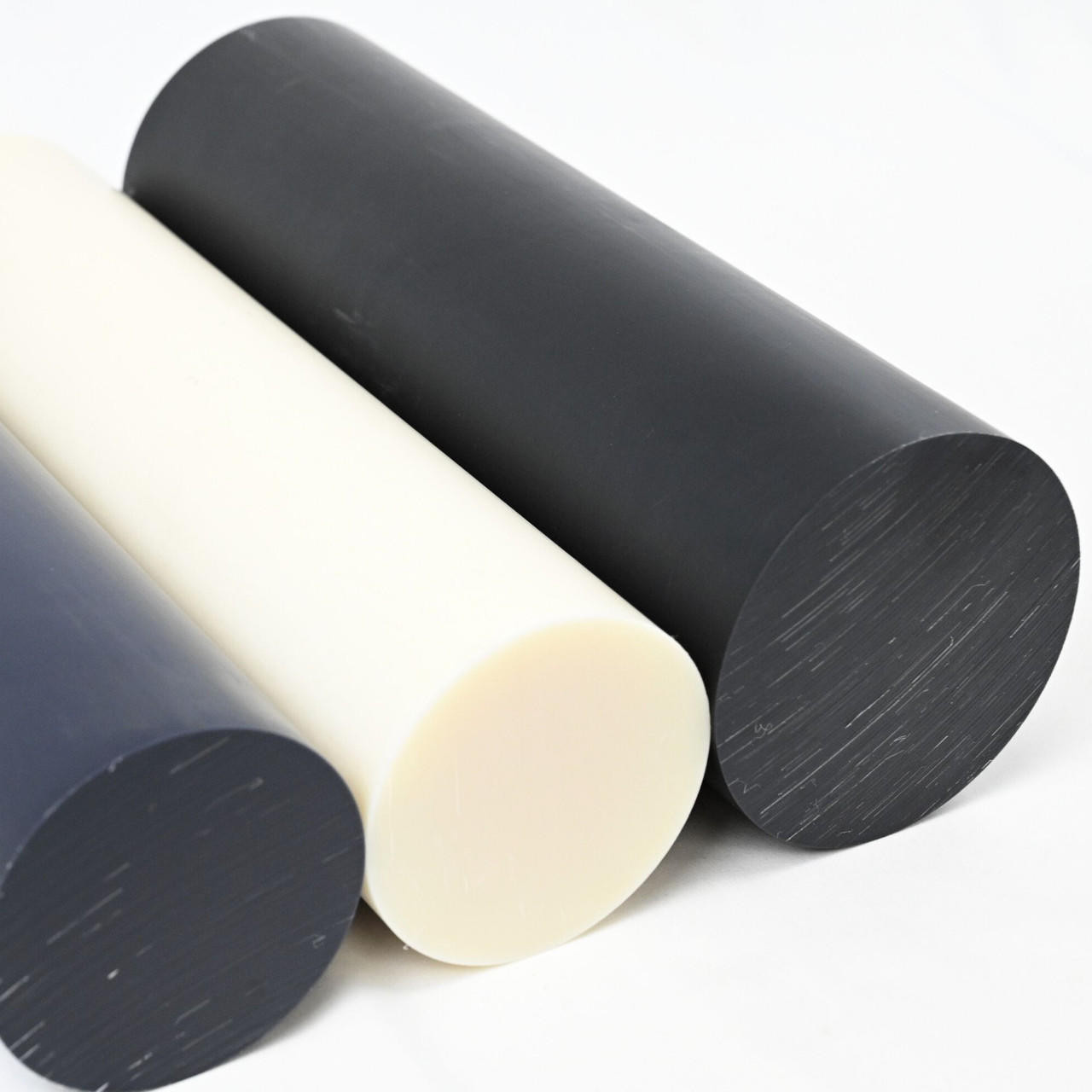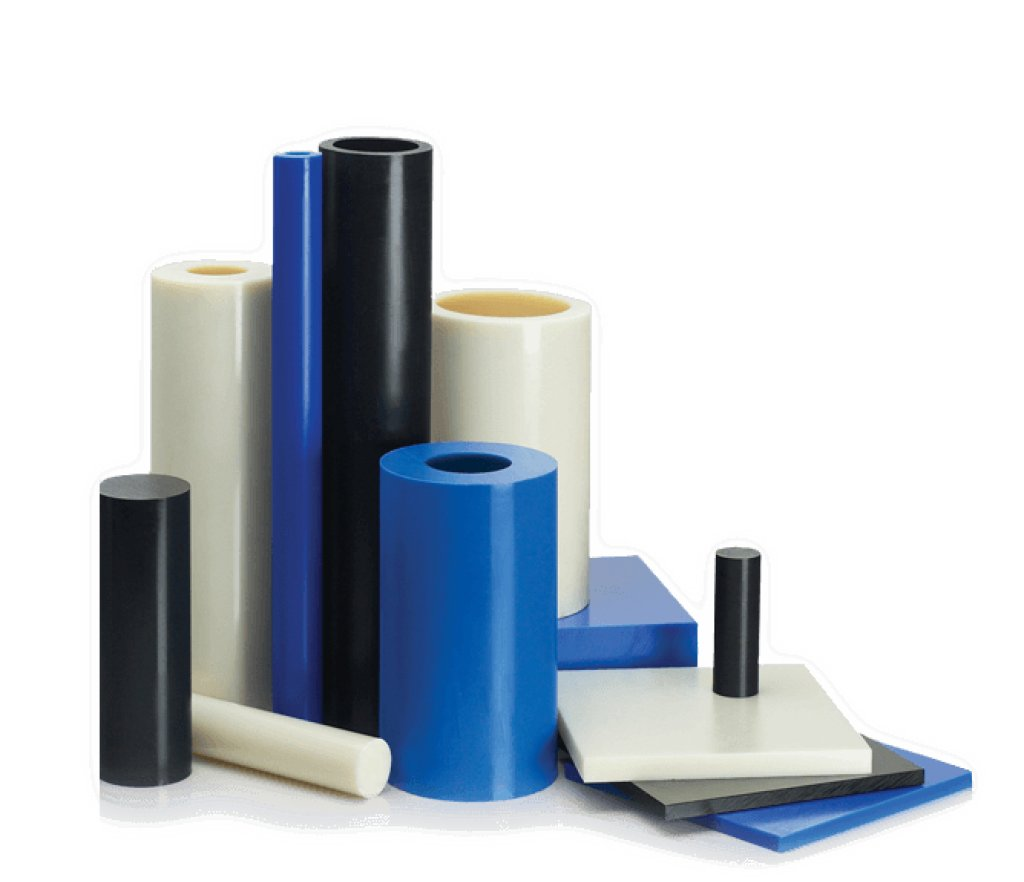Nylon 6, most commonly known as Cast Nylon, was first developed prior to WWII by DuPont. However, it was not until 1956 with the discovery of chemical compounds (co-catalysts and accelerators) that cast nylon became commercially viable. With this new technology, the speed of polymerization was greatly improved as well as reducing the steps necessary to achieve polymerization.
Because there are fewer processing limitations, Cast Nylon 6 provides one of the largest array of sizes and custom shapes of any thermoplastic. Castings are available in rods, tubes, tubular bar, and sheet. They range in sizes from as small as 1 pound to as large as 400 pounds per part.
Cast Nylon 6, because it has high crystallinity and high molecular weight, has considerably greater modulus, higher heat deflection temperature, better solvent resistance, better hydroscopic characteristics, and better dimensional stability than extruded Nylon 6/6. Additionally, a large variety of dry, solid, and oil base fillers can be added to make products better suited for more demanding applications.
Like other nylons, Cast Nylon 6 is not recommended for extremely wet applications. Moisture can cause Cast Nylon 6 to swell as much as 5% in fully immersed applications.
Cast Nylon shapes are available in a wide range of sizes & grades. Their flexibility and performance characterics have led to Nylons replacing bronze, brass, steel, and aluminum in various mechanical applications. So what makes nylon suitable for so many applications? A quick look at the material's basic properties compared to other common materials shows why. Nylon has excellent tensile and compressive strength, good wear properties and is an excellent electrical insulator. It can also be modified to improve just about any individual property; plasticizers improve impact strength, lubricants reduce coefficient of friction, anti-oxidizers improve operating temperature range, glass fibers improve rigidity, other additives allow the use of colored nylons in direct food contact applications.




